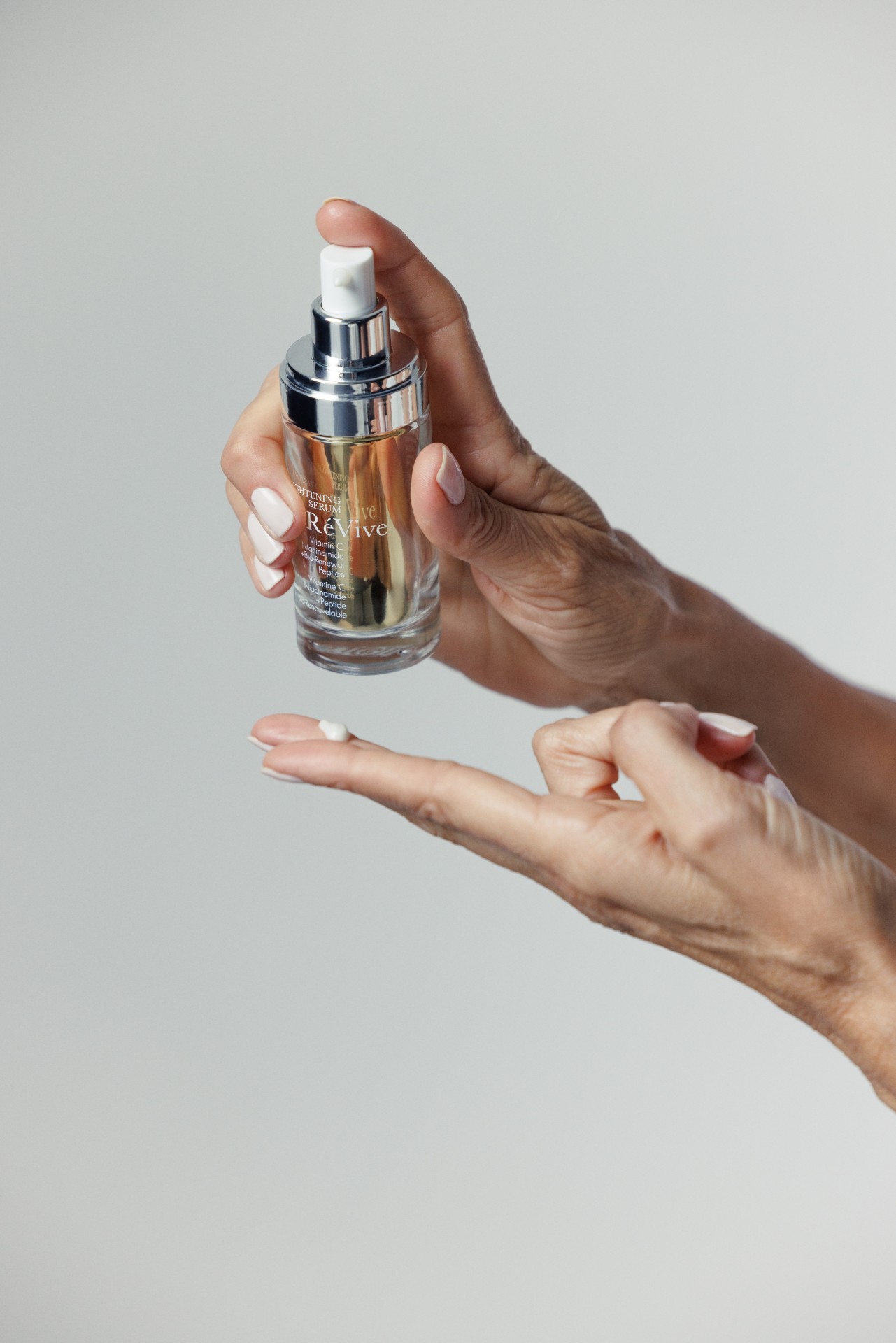ReVive's New Brightening Serum Is 50 Percent More Powerful Than Traditional Vitamin C
Proof of my glowing skin, ahead.
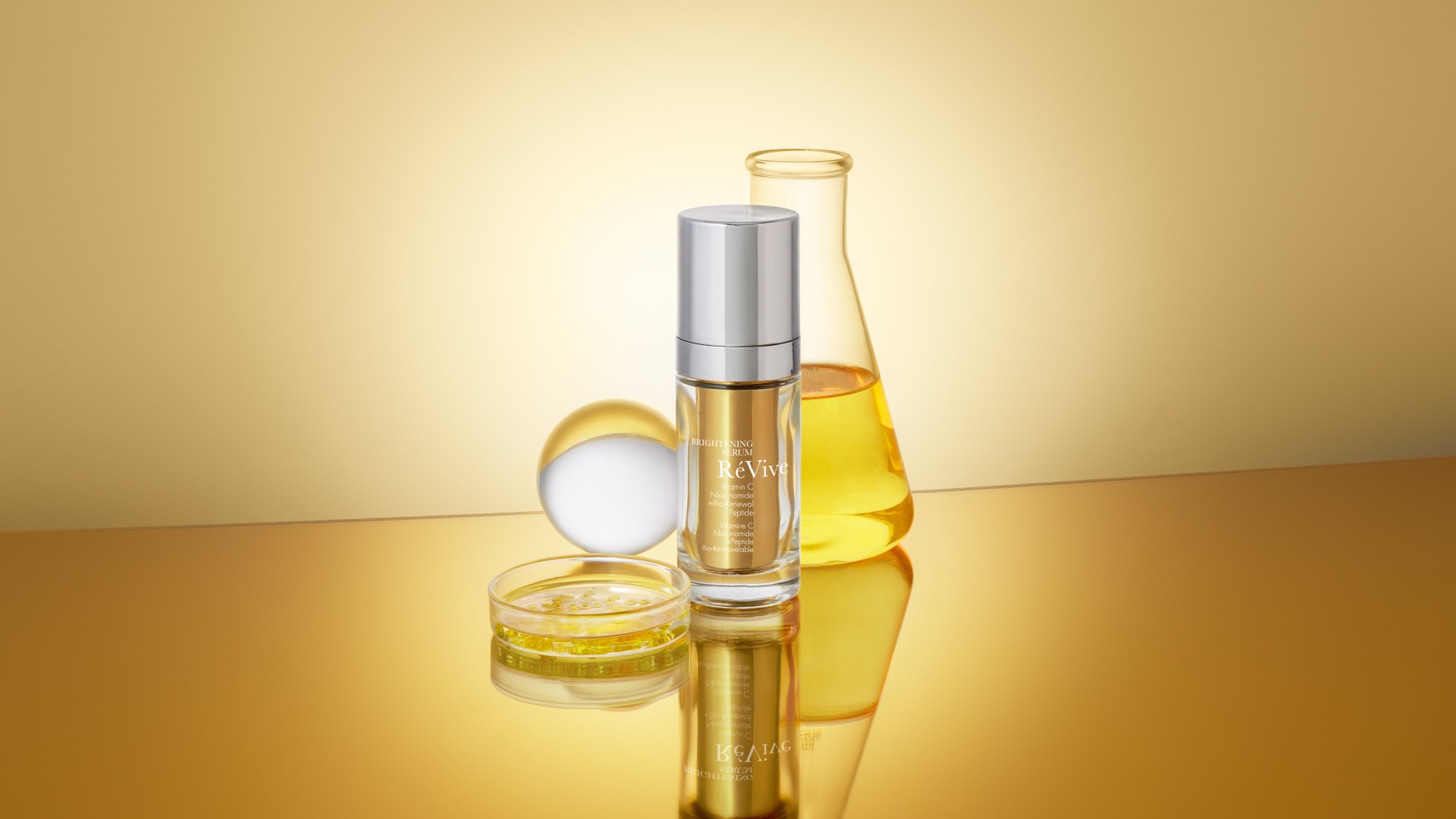

To know me, is to know I swear by ReVive skincare. My admiration for the brand is sound: The brand’s scientists, along with the founder, Dr. Gregory Brown, are constantly innovating and pushing their product formulas to work at the highest level of efficacy possible. Case in point: They just dropped a brand new Brightening Serum that’s proven to be 50 percent more powerful than the best vitamin C serums—and is known to be more stable and less irritating than other derivatives.
Vitamin C is historically a tricky ingredient. Don’t get me wrong, its brightening benefits and antioxidants properties are the gold standard. But, it’s difficult to stabilize, which is why you’ll find it alongside ingredients like ferulic acid, packaged in a dark tinted bottle, and with a fairly high price point. To have a new Hail Mary iteration? It completely scraps the long held conventions and introduces a new standard for brightening serums across the board.
All that to say, I got my hands on the very first ReVive Brightening Serum lab sample to make its way out into the skincare world and have been diligently testing morning and night for the past four weeks. My skin looks glowier, more even, and more hydrated with just this one product swap.
That in mind, I took a laundry list of questions to Dr. Gregory Brown, ReVive founder and board-certified plastic surgeon, and Amanda Kahn, ReVive’s SVP of Marketing to figure out exactly why the Brightening Serum is so effective.
What Makes ReVive's Brightening Serum Different?
L ascorbic acid, ascorbyl palmitate, ethyl ascorbic acid—these are just a few of the typical vitamin C derivatives. They work. In fact, many of them are found in our favorite face serums. Recently, a new type of vitamin C has made its way into the market: THD ascorbate. “L-ascorbic acid has been the industry standard and it does oxidize and it smells kind of bad. We just accepted that if you wanted brighter skin or wanted to treat your discoloration, that’s what you needed to use. We don’t need that anymore,” says Kahn.
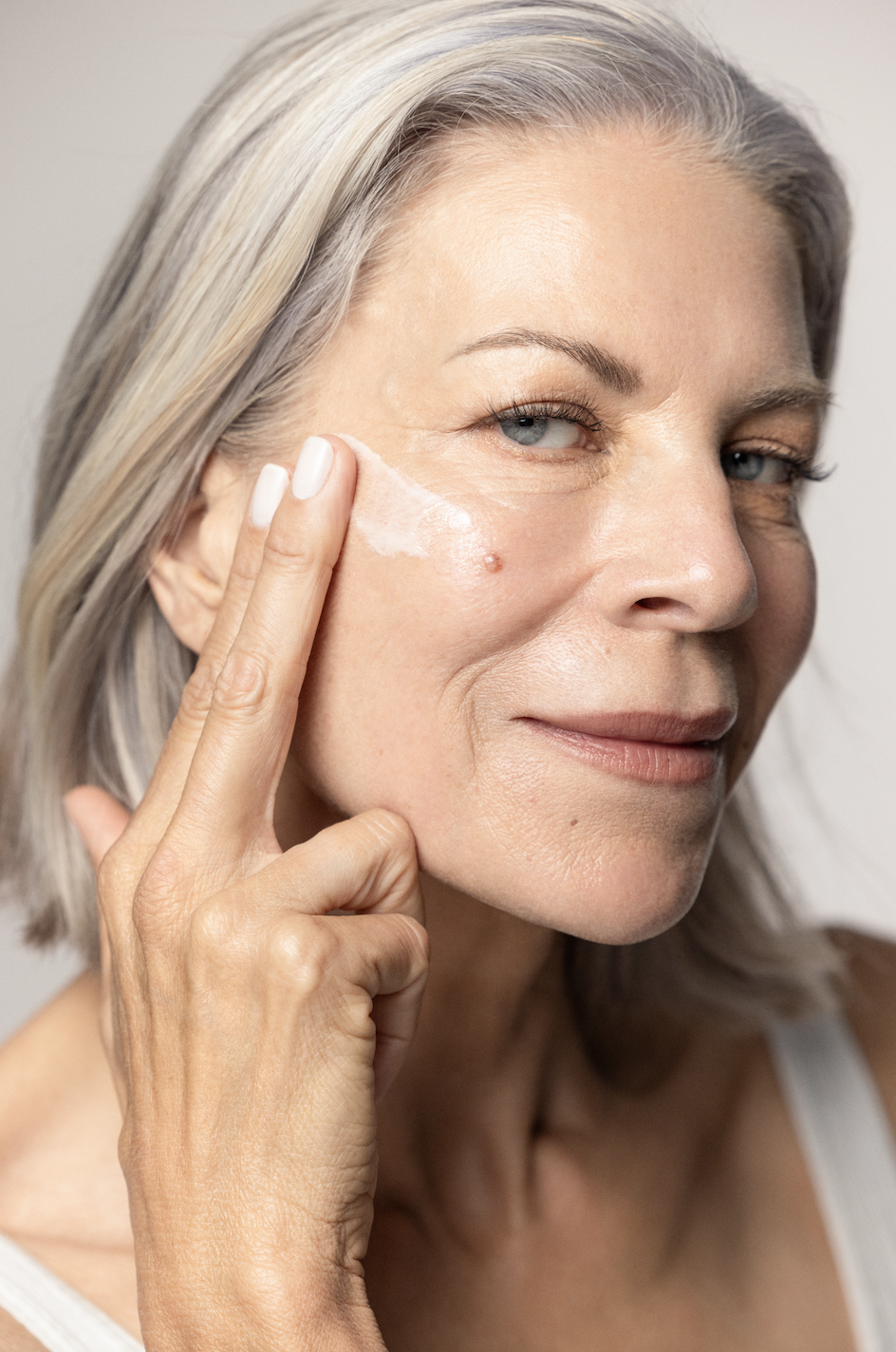
After four weeks of using ReVive's Brightening Serum, 97 percent of customers noticed an improvement in their fine lines and wrinkles.
Because THD ascorbate doesn’t oxidize when it hits the air, it’s able to penetrate the skin better and target cells 50 percent more efficaciously. While a few other brands on the market have been THD ascorbate early adopters, ReVive is the only one to pair the active with their patented BioRenewal Peptide, which focuses on plumping, regenerating, and hydrating the skin. “Not only does it brighten, but it renews as well. You do see results right away,” Dr. Brown adds.
The Ingredient Breakdown
THD Ascorbate
Stay In The Know
Get exclusive access to fashion and beauty trends, hot-off-the-press celebrity news, and more.
A “quantum leap” for vitamin C, THD ascorbate is the latest brightening innovation in the skincare world. “Vitamin C scavenges free radicals, it inhibits pigmentation and is vital for collagen. When vitamin C gets oxidized, all of those beneficial effects go away,” explains Dr. Brown. “The fact that THD ascorbate can stay active in sunlight on the surface of the skin makes it a huge leap.” The ingredient is also paired with hydrating hyaluronic acid and niacinamide, to create a brighter, more hydrated appearance.
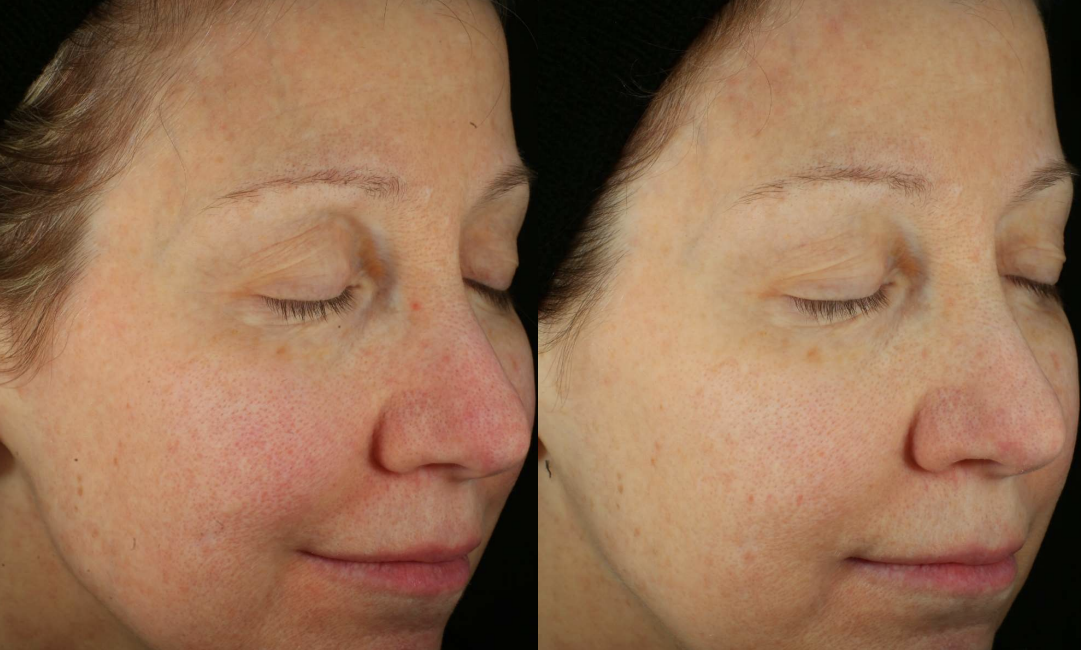
After four weeks of using ReVive's Brightening Serum, skin appears more even in tone, plumper, and softer.
BioRenewal Peptide
This peptide has been a staple in ReVive products for 27 years. It addresses fine lines and wrinkles, dehydration, and dullness, while convincing the skin to behave like it did when it was younger.
My Review of ReVive's Brightening Serum
Vitamin C and I have a tumultuous relationship. I have very sensitive skin and many leave my face red, irritated, and burning. While I still get some brightening benefits and antioxidant protection with the low percentage formulas, I’ve never been able to go all-in with the heavy duty options. When the ReVive team asked me to test their latest innovation, I was instantly intrigued by this supposedly less irritating, more stable iteration.
The bottle itself is gorgeous and luxurious. One pump onto the back of my hand shows the formula is accompanied by a slight pearlescence. It’s on the creamier side for a vitamin C serum, almost reminiscent of a light lotion. It smelled like refreshing citrus in a way that wasn’t overwhelming.
Immediately after rubbing the product onto my skin, I noticed a luminescence and instant glow. Historically, I get a little red and flushed after putting on vitamin C serum, however I noticed no reaction in the immediate aftermath. It felt hydrating, nourishing, and honestly even a little soothing on my irritable skin.
I continued using the serum every morning for weeks, and am living proof of the brand’s wild claims (read: 100 percent says skin is more radiant and smoother). My face looks brighter and bouncier. My tone is more even and the discoloration from a cyst pimple on my chin is finally fading. The best part: I haven’t experienced any irritation, rashes, or perioral dermatitis as a result. Coming from my highly sensitive skin, that is the ultimate testament.

Samantha Holender is the Senior Beauty Editor at Marie Claire, where she reports on the best new launches, dives into the science behind skincare, and shares the breakdown on the latest and greatest trends in the beauty space. She's studied up on every ingredient you'll find on INCI list and is constantly in search of the world's glowiest makeup products. She's constantly tracking the biggest nail and hair trends to pop up in the beauty space, going backstage during fashion weeks, tracking celebrity looks, and constantly talking to celebrity hair stylists, nail artists, and makeup artists. Prior to joining the team, she worked as Us Weekly’s Beauty and Style Editor, where she stayed on the pulse of pop culture and broke down celebrity beauty routines, hair transformations, and red carpet looks. Her words have also appeared on Popsugar, Makeup.com, Skincare.com, Delish.com, and Philadelphia Wedding. Samantha also serves as a board member for the American Society of Magazine Editors (ASME). She first joined the organization in 2018, when she worked as an editorial intern at Food Network Magazine and Pioneer Woman Magazine. Samantha has a degree in Journalism and Mass Communications from The George Washington University’s School of Media and Public Affairs. While at GWU, she was a founding member of the school’s HerCampus chapter and served as its President for four years. When she’s not deep in the beauty closet or swatching eyeshadows, you can find her obsessing over Real Housewives and all things Bravo. Keep up with her on Instagram @samholender.
-
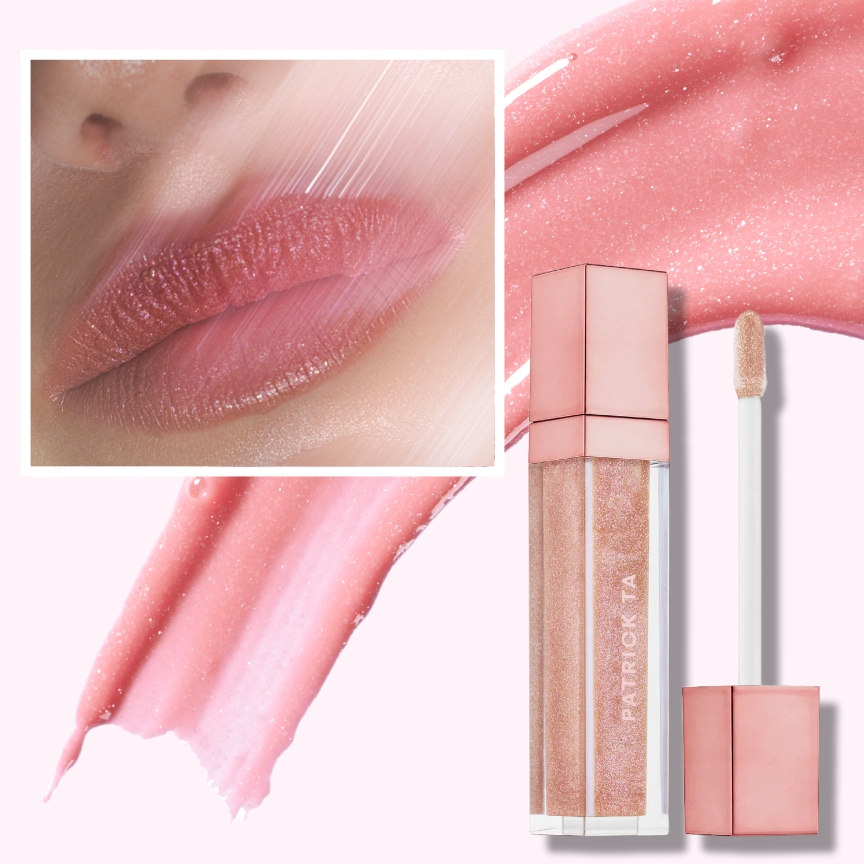 Trade Your Multi-Step Lip Care Routine for One Do-it-All Gloss
Trade Your Multi-Step Lip Care Routine for One Do-it-All GlossHydration, pigment, and longevity.
By Siena Gagliano Published
-
 I’m Wearing These On-Sale Summer Tops With Everything This Summer
I’m Wearing These On-Sale Summer Tops With Everything This SummerFrom denim to skirts, these under-$150 finds work with everything.
By Brooke Knappenberger Published
-
 My Afro and I Have a Summer Muse—and Her Name Is Kerry Washington
My Afro and I Have a Summer Muse—and Her Name Is Kerry WashingtonMy curls understand the assignment.
By Ariel Baker Published
